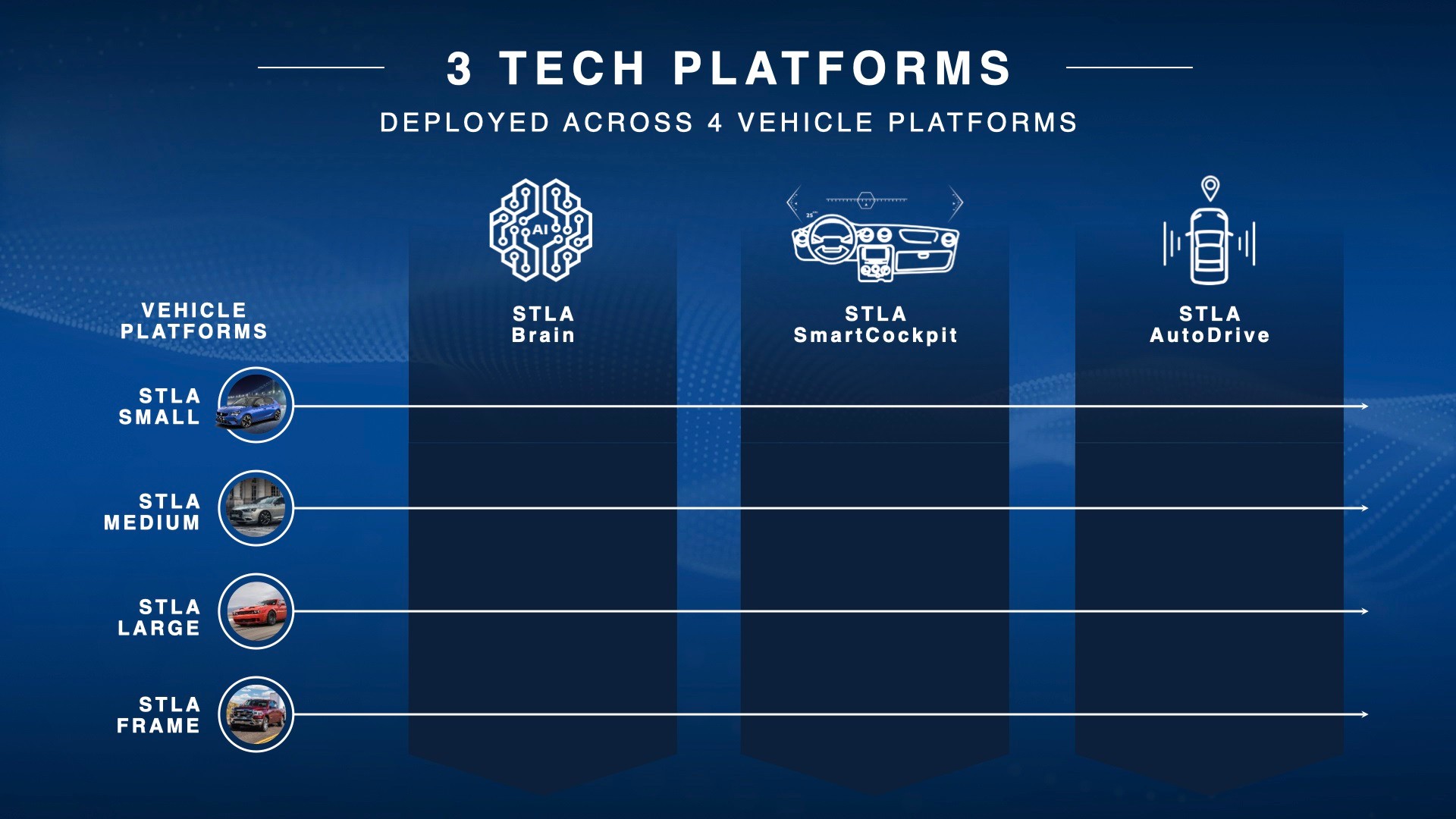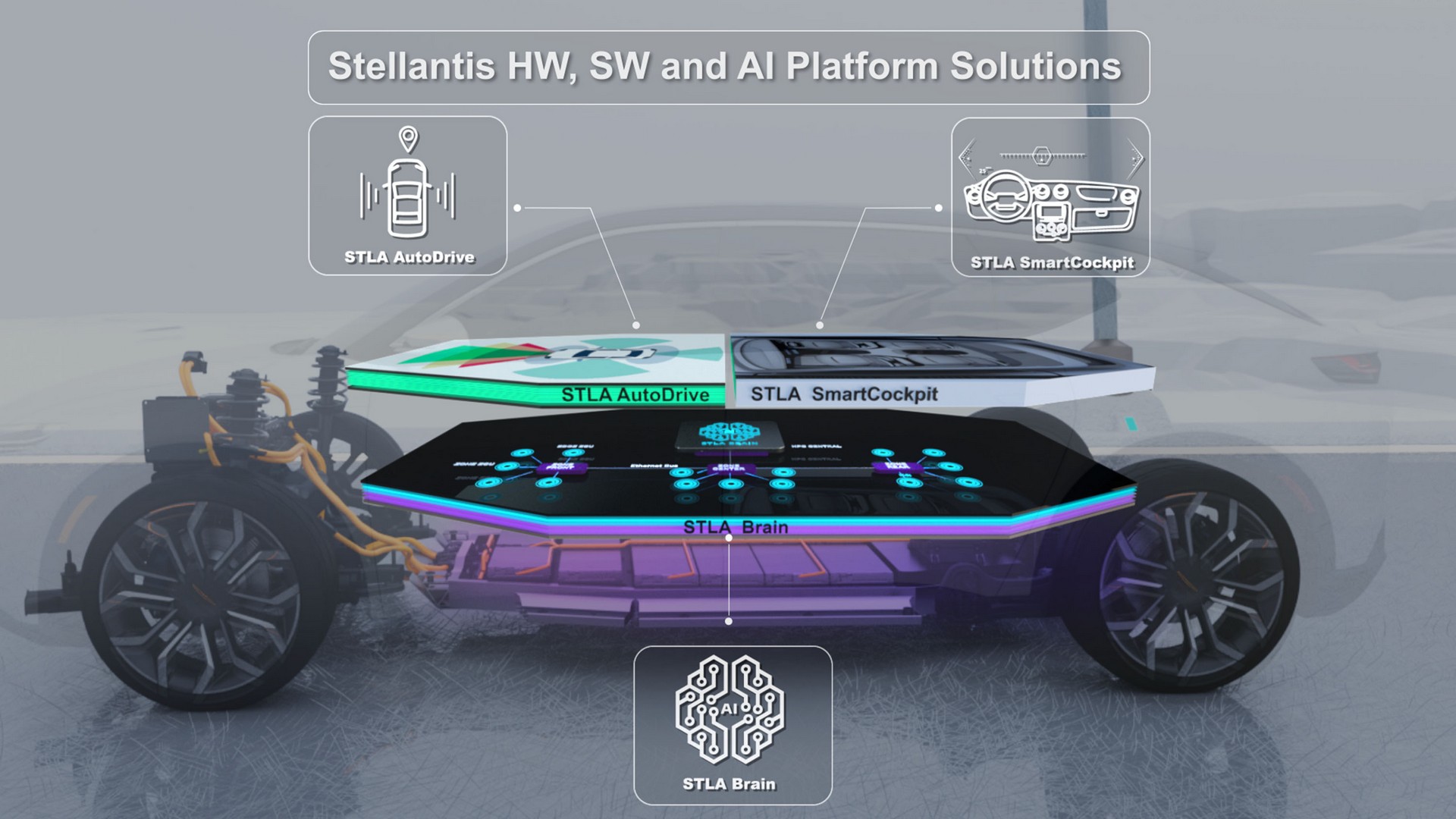Stellantis has revealed a series of technologies and partnerships aimed at making their vehicles more profitable and advanced.
When it comes to partnerships, the automaker has signed a non-binding memorandum of understanding with Hon Hai Technology Group (Foxconn) that calls for the design and development of a “family of purpose-built semiconductors to support Stellantis and third-party customers.”
Stellantis CEO Carlos Tavares said the partnership aims to “create four new families of chips that will cover over 80% of our semiconductor needs, helping to significantly modernize our components, reduce complexity, and simplify the supply chain.”
On the autonomous driving front, the automaker announced an expanded partnership with Waymo that involves local delivery services. The companies didn’t go into many specifics, but Stellantis said the collaboration is focused on commercial vehicles and engineering teams will get their hands on prototypes next year.
Furthermore, the company announced three new “tech platforms” that will be used on their upcoming electric vehicles. The main component is known as STLA Brain and it’s billed as a new electrical and software architecture, which features three times the number of modules as current architectures and is capable of receiving over-the-air updates. Stellantis went on to describe it as a “service-oriented architecture fully integrated with the cloud that connects electronic control units within the vehicle with the vehicle’s central high-performing computer via a high-speed data bus.”
The second platform is STLA SmartCockpit and it’s the result of the Mobile Drive joint venture, between Stellantis and Foxconn, that was announced earlier this year. It promises to deliver “AI-based applications, such as navigation, voice assistance, e-commerce marketplace and payment services.”
If that wasn’t interesting enough, Stellantis is partnering with BMW for STLA AutoDrive. This platform will allow for Level 2, Level 2+, and Level 3 semi-autonomous driving systems, which will be “continuously upgraded” through over-the-air updates.
Stellantis is also aiming to monetize connected vehicles through services and subscriptions, features on demand, and using data as a service. The automaker also announced plans for a “usage-based insurance program” that will be launched next year and offered through “captive finance arms in Europe and North America.” It will presumably charge drivers based on how many miles they travel.
Stellantis expects to make a ton of money through these “software-enabled product offerings and subscriptions” as they’re projected to account for approximately €4 ($4.5 / £3.4) billion in annual revenues by 2026. That number is expected to jump to around €20 ($22.5 / £17) billion by 2030.
Of course, Stellantis is far from the only company going this route as we’ve previously noted the 2022 Toyota Tundra offers an assortment of monthly subscriptions including Safety Connect, Remote Connect, Drive Connect, and Wi-Fi Connect.







